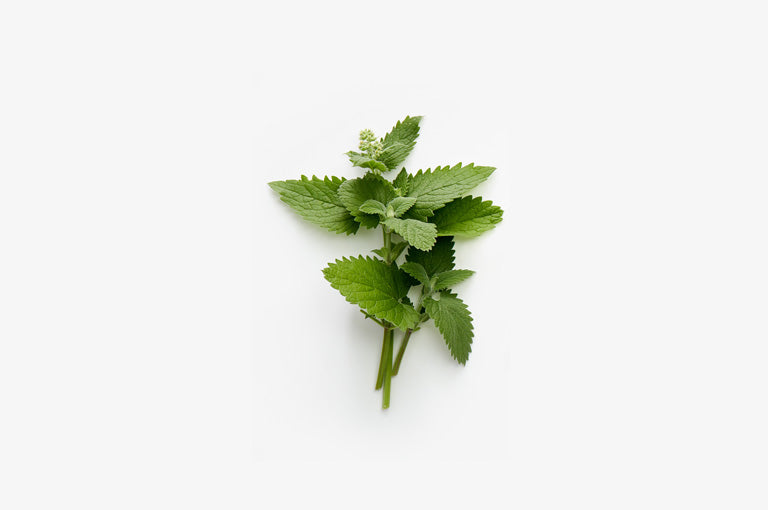—Feline Behavior Specialist 🇺🇸
|
We’ve looked at toxic and safe plants for cats in a previous article, but now I want to talk about the plants that make kitties really funny, happy, and euphoric: catnip and silver vine. Many toys have one or both of these plants in them, and they are an important part of building an enriched environment for your fur babies. Here’s how they work and why cats love them. |
What Is Catnip?
Catnip is a perennial (grows every spring) herb in the mint family that is nontoxic and not addictive for cats. Although you’re probably thinking of catnip as a dehydrated oregano impersonator, living catnip plants can grow up to 3 feet tall and also have white flowers.
Although it’s native to Europe, Africa, and Asia, gardeners everywhere plant catnip because it’s drought tolerant, and it contains a strong smelling essential oil, nepetalactone, which makes it deer-resistant and a mosquito repellant.
How Catnip Affect Cats
Scientists don’t know exactly what catnip does in the cat’s brain, but it’s believed the essential oil nepetalactone enters through a cat’s nose by smelling it or mouth by eating it (don’t worry – it’s safe to eat).
The olfactory bulb, which processes smells for the brain, communicates to the amygdala (emotions) and hypothalamus (nervous system), which in turn talks to the pituitary gland, the hormone producer.
The result? A euphoric kitty that’s sniffing, chirping, rolling around, excessively rubbing against things, licking, drooling, showing belly, vocalizing, rabbit kicking objects, eating the catnip, etc.
Fun Facts About Catnip
- Catnip’s effects last about 10-15 minutes, and typically they become playful, excited, and then go to sleep.
- Even big cats are affected by catnip! This includes cougars, mountain lions, jaguars, leopards and lions, although tigers seem mostly unaffected.
- Cats can get used to catnip if they are around it frequently. Expose them every 2-3 weeks so it continues to have an effect.
- Usually, a cat walks away when it’s done with catnip, but if a cat eats too much ‘nip, it could have mild stomach discomfort.
- Sometimes male cats show signs of aggression with catnip, most likely because it causes behaviors similar to mating. If your cat is one of the rare cats that gets aggressive with catnip, stop using it.
- Catnip can be rubbed on scratchers and cat trees to entice interest.
- It’s believed about 70% of cats respond to catnip, and their response to the essential oil nepetalactone is genetic.
- In a study in 2017, researchers studied the impact of four different plants on cats, including catnip. The study found that nearly all cats will respond to at least one of the four, so if your cat isn’t a catnip lover, you can try Tatarian honeysuckle or valerian root, or a plant that produces the strongest response of them all, silver vine.
What is Silver Vine?
A climbing plant that grows in the mountains of Japan and China, silver vine has white tipped leaves that look like they’ve been dipped in paint and small white flowers. It also bears kiwi fruit that isn’t very palatable.
But while people may pass on the fruit, if silver vine’s fruit galls are dried and made into powder, studies show it’s much more potent to cats than catnip. Silver vine contains a nepetalactone along with a handful of other similar components.
How Silver Vine Affects Cats
Unlike catnip, cats don’t eat silver vine, they only smell it, but it likely works similarly in the brain, it just has a stronger effect. Similar to catnip, it causes cats to roll around, meow, rub their cheek and chin, drool, and lick.
Fun Facts About Silver Vine
- The effects of a silver vine last for a cat anywhere from 5 to 30 minutes.
- It’s practically impossible to grow silver vine outside of its natural habitat, making it more expensive.
- The wood and leaves of the silver vine contain much less of the components cats go crazy for.
- The reason catnip and silver vine smell the way they do is to keep insects away. But what the insects don’t like, the cat’s are happy to enjoy.
- As with catnip, it’s a good idea to expose your cat to silver vine once every few weeks so they continue to be affected.
The Best of Both Worlds
Catnip? Or silver vine? Why not both?! More and more toys are coming out with both so no matter what, you’ll give your cat a euphoric experience.
Remember, any sort of toys, towers, and other products you use not only make your cat happier and healthier, but they also build a stronger bond with you. Never overlook the opportunity to grow your relationship with your cat, and catnip and silver vine are two easy ways to do it.
Sources
Scientific American, How Does Catnip Work Its Magic on Cat?.
Animal Emergency and Referral Center of Minnesota, What Is Catnip & What Does It Do to My Cat?.
Weisberger, Mindy. Live Science, Does Catnip Really Make Cats ‘High’?.
Hill’s Pet, The Effects of Catnip on Your Cat.
Bol, Sebastiaan; Caspers, Jana; Buckingham, Lauren; Anderson-Shelton, Gail Denise; Ridgway, Carrie: Buffington, C.A. Tony; Schula, Stefan; Bunnik, Evelien M. BCM Veterinary Research. Responsiveness of Cats to Silver Vine, Talarian Honeysuckle, Valerian, and Catnip.
Gardenia, Actinidia Polygama.
PurrfectPost, Silver Vine.
Hartz, Silver Vine Questions and Answers with Sebastiaan Bol, Ph.D.
Article by Elizabeth Italia 🙋♀️
Cat Behavior & Fostering Specialist



